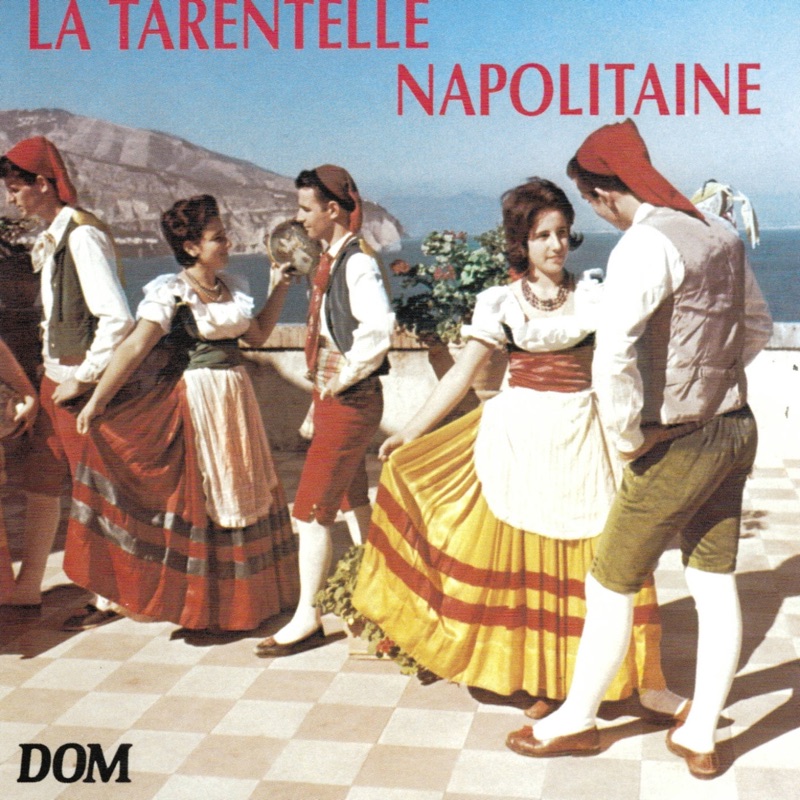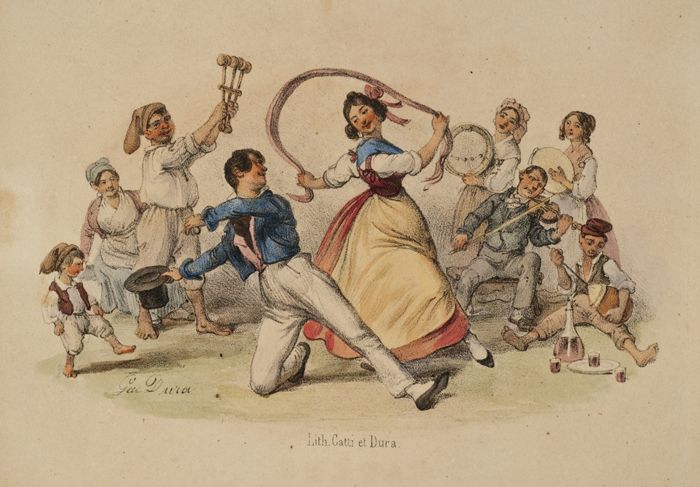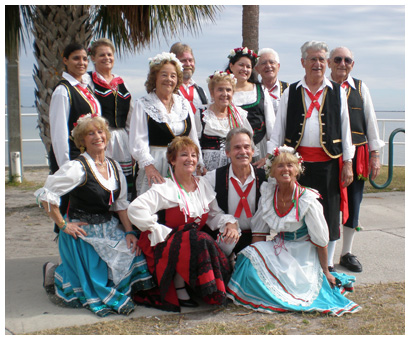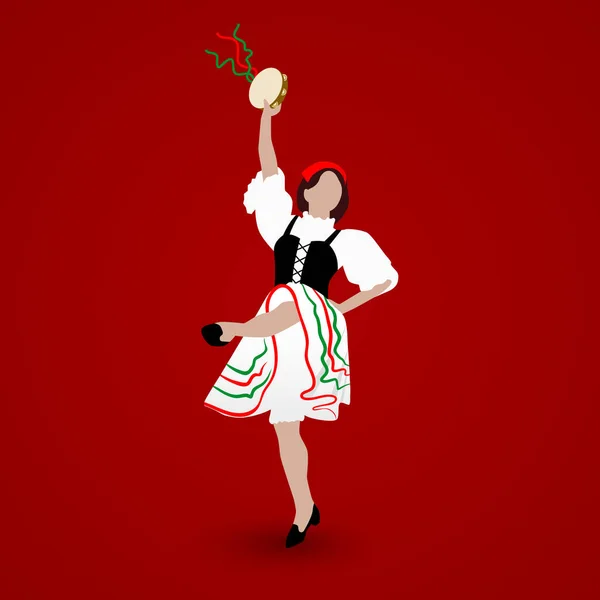How to dance tarantella
Tarantella: An Italian Folk Dance
There is that familiar upbeat hum playing in your head, you know how it goes, but you are not sure what the name is.
Dancers clad in bright red, white, and crisp green outfits to match the powerful trifecta that represents her flag, whilst merrily playing the tambourine to the beat of the song.
It is none other than the lively Italian Folk Song called Tarantella Napoletana. Viva I’Italia!
Ciao! Deeply rooted in the culture-rich streets of Italy is the multi-faceted folk dance called Tarantella. Modern times today associate it with a dance portraying happiness, mostly at weddings and other Italian type festivals.
However, through the centuries the Tarantella developed from a much shadier place and was oddly even used as a cure. Yes, read that again!
The birthplace of the name of this dance is in the Puglia region in “Italy’s boot” in the Southern part of the country. In a small town called Taranto, this dance is also commonly known amongst locals as the “dance of the spider”.
The reason for this is due to the Wolf Spiders that are found in the town. Hence the term tarantola (tarantula) was coined. It was believed that the bite from this venomous spider was highly toxic and subsequently called tarantism.
During the 15th to 17th centuries, the spider bites were rife apparently. Sadly women of lower social status, such as the peasants, appeared to form the majority of the victims, and they were called the tarantata. This is due to the fact that in those days the townswomen were the ones that had to work in the fields. The female victim would enter a state, resembling a fit which caused extreme restlessness.
Other symptoms associated with the spider bites where blurry vision, fainting spells, and controllable tremors and shaking.
The only available anti-venom known at the time was for the victim to be surrounded by the townsfolk people. The cantautori (musicians) would strum along with instruments such as guitars, tambourines, and mandolins. The pace and beats will differ until the cantautori felt that they have reached the rhythm that would heal the tarantata.
The tarantata victim will then continue with this tempo until they have perspired out the poison left by the Wolf Spider.
Throughout the ages, it has evolved from an anti-venom for the poison of the Wolf Spider, to dance of flirtation and celebration.
The folk dance is now practiced by two pairs, comprising of one man and one woman each. The female counterparts are known to be shaking the tambourine, whilst dancing. The steps are executed in 6/8 time at an upbeat pace, all the qualities we have come to know and appreciate about it.
The composers Frédéric Chopin, Franz Liszt, and Carl Maria von Weber adapted the tarantella for piano play.
The steps and movements of the dance are identified as swift and lively. It is said that the partners are teasing each other in a flirtatious manner. Bellisima!
The brisk, sweet movements of the female counterpart, together with the intoxicating beat of the tambourine is said to be causing much excitement in her male counterpart. The male counterpart’s role is to lure his partner into succumbing to his charms, tender moves and the quickness of his feet on display. How romantic is that?
The dance starts off with an 8-count and is broken down into three parts:
Part One
- Partners face each other and start to skip in a counter-clockwise movement in a circle. This is done by 16 counts, broken down into two sets of 8 counts each.
- The process is now repeated on the other side (going in a clockwise direction in a circle).
Part Two
- The two couples face each other again in a circle.
- Bring the right heel forward first for 2 counts.

- Place the right heel backward for 2 counts.
- Do a 360° turn for 4 counts, until you are back facing the other counterparts.
- Repeat steps 2-4 with the left foot now.
Part Three
- Facing your other counterparts, use the tambourine and slap your right knee, bringing it to your chest for 4 counts.
- Repeat with your left knee.
- Repeat with your right knee.
- Repeat with your left knee.
Lastly, now put all of the steps together and dance the Tarantella to the Tarantella Napoletana.
It is believed that you never, ever dance the Tarantella alone, or with two persons of the same gender…it is said to be bad luck! After all, you would not want to be banished to the middle of the town having to exhaust yourself doing a cardio workout to rid your system of the venom? Addio!
Categories Community, Culture, HeritageMovements - Italian Dance
The dance itself is said to be “unlucky” to dance alone, therefore, people dance in couples or groups. However it isusually performed by couples, in which one member dances for the other. Occasionally one person may be kneeling.
However it isusually performed by couples, in which one member dances for the other. Occasionally one person may be kneeling.
The dance partners can be a man and a woman or two women. The steps are nimble and the dancing involves a lot of whirling, flirtatious glances, and close approaches. With multiple couples, the tarantella is a circle dance alternating from clockwise to counter-clockwise and back to clockwise as the music progresses. The dance picks up speed as it goes.
With this, the dance is usually created around the music, with small steps in time to the music and hand gestures to match. The dance is accompanied by a musical instrument.
How to do the Tarantella:
- Facing front, cross your right foot in front of the left. Cross your left foot in front of the right. Step your right foot to the side, step your left foot to the side. Repeat this while the woman shakes the tambourine in a clockwise circle in front of her body.

- Place your hands on your hips, kick the right foot out to the front keeping it low to the ground, then step on the right foot putting weight on it, slightly in front of the left foot. Touch the ball of your left foot to the ground (without putting your full weight on it) then step in place with the right foot. This sequence is called the tarantella step. Repeat this sequence beginning with a left-foot low, front kick. Repeat again beginning right, then repeat once more beginning with the left. Perform this sequence three more times, traveling backward slightly.
- Face your partner. The woman hits the tambourine to her left shoulder, her left hip, then her right hip. Repeat this, making a triangle across the body. Tap the left hand twice with the tambourine. Perform the tarantella step forward twice, beginning with the right foot kick, so that your right shoulders pass each other. Dance the tarantella step twice moving backwards to return to the starting position. This back and forth sequence can be referred to as a "do-si-do.
 " Moving the tambourine twice as quickly, the woman taps her left shoulder then right hip. Repeat this tambourine sequence, then tap the left hand twice with the tambourine. Repeat the "do-si-do."
" Moving the tambourine twice as quickly, the woman taps her left shoulder then right hip. Repeat this tambourine sequence, then tap the left hand twice with the tambourine. Repeat the "do-si-do." - The man holds the tambourine in his left hand and kneels on his right knee, tapping the tambourine for seven counts of music on his right hip. On count eight, tap it twice. The man continues to kneel for eight more counts of music. Meanwhile, the woman places her hands on her hips and dances eight tarantella steps in place.
- The man remains in the kneeling position for the next 16 counts of music, but with the tambourine now shaking above his head. The woman performs eight Tarantella steps forward in a counterclockwise circle around the kneeling man.
- Two couples stand opposite each other with right hands reaching center, holding hands, forming a star shape, with left hands holding the tambourines. The couples perform eight tarantella steps simultaneously, the group rotating in a circle clockwise.
 Clap the tambourine on the last step. Everyone turns to join left hands in the center. Perform the eight tarantella steps again, now turning in the opposite direction. Clap the tambourine on the last step.
Clap the tambourine on the last step. Everyone turns to join left hands in the center. Perform the eight tarantella steps again, now turning in the opposite direction. Clap the tambourine on the last step.
http://www.ehow.com/how_5368697_do-tarantella-dance-steps.html
Dance tarantella (tarantella) - the musical symbol of Italy
Tarantella (tarantella) - the most famous Italian dance, which has become a real symbol of the country and the Italian nation.
This bright and lively dance is shrouded in centuries-old legends and myths, one way or another connected with poisonous tarantula spiders. The legend says that in the 14th-15th centuries in the southern regions of Italy near the city of Taranto, tarantulas bred and bit women. Of course, only commoners who worked in the field were bitten. Under the influence of the poison of tarantulas, poor women fell ill with tarantism (tarantism is a medical term for one of the forms of hysterical behavior). There was talk of a real epidemic. A method of treating those who fell into a trance with the help of dance was proposed. Musicians surrounded the woman and played music at a fast pace, forcing the patient to dance. Sometimes this dance was called the spider dance.
There was talk of a real epidemic. A method of treating those who fell into a trance with the help of dance was proposed. Musicians surrounded the woman and played music at a fast pace, forcing the patient to dance. Sometimes this dance was called the spider dance.
One of the older legends says that the tarantella originated in the time of sacrifices, when a beauty sacrificed to spiders, making quick movements, tried to avoid bites.
There is also a version that in the old days, the consequences of a tarantula bite, of which there are plenty in southern Italy today, were eliminated with the help of profuse sweating. Dance until the seventh sweat and was tarantella. Wandering musicians were always ready to come to the aid of a bitten spider. Everyone who happened to be nearby hurried to help. So the dance became pair and group. Later, the tarantella was considered the personification of lust, because frantically dancing women have always attracted increased male attention.
The noble gentlemen also liked the Tarantella. In the 17th century, the tarantella began to be danced even at balls. By that time, the epidemic of tarantism had also ceased.
Tarantella music is always improvisation with great sound extensions and cadence additions. They perform tarantella on various musical instruments - mandolin, accordion, guitar, but always without fail to the accompaniment of tambourine and castanets.
Tarantella has become a classic. This dance can be seen in the theater and cinema, it has penetrated into literature and painting. We can safely say that the tarantella is part of the soul of a true Italian. Today the tarantella is ubiquitous in Italy, but is still more popular in the southern regions. No holiday is complete without this incendiary dance. In different regions of Italy, the tarantella has its own characteristics, and sometimes a special name. Tarantellas differ in different regions and in the degree of fury of the dance, in some places it can even look somewhat sedate.
No Italian carnival is complete without a tarantella!
Neapolitan Tarantella:
Neapolitan Tarantella on accordion:
Neapolitan Tarantella performed by the orchestra. Vocal by Renzo Arbore:
Neapolitan tarantella performed by Mario Lanza:
Neapolitan tarantella Pulcinella:
Tarantella of the Apulia region:
30002 Tarantella Sicilian:
Tarantella Kalabria region:
And this is for those who want to learn how to dance to tarantella:
updated: Victoria camilleryi Tags: holidays
names, old and modern, inadtest Tarantella
60,783 views
It is believed that traditional Italian dances began to form in the 15th century. Prior to this, the dance movements of the Italians did not differ in variety and did not have clear patterns and rules.
The Renaissance changed the attitude towards God and culture in general. The nature of Italian dances has changed - lightness, smoothness, speed in movements have appeared. Step-by-step smooth combinations began to turn into the so-called balli - light movements at a fast pace. Symbolism appeared in the dances - holding a full foot on the floor, the dancer, as it were, connected with the Earth, standing on his toes - aspired to the Divine.
Notable Italians invited the choreographer Guglielmo Ebreo da Pesaro and Domenico della Piacenza, a well-known dance theorist in the 15th century, to create the cultural heritage of the country. Thanks to these people, new dance movements appeared, old dances were reworked, many steps were taken from the culture of other peoples.
Here is a list of the most incendiary ancient and modern Italian dances:
Contents
Galliarda
Gagliarda - translated as "jolly" - is considered the oldest dance in Italy. Galliard was performed in pairs or solo. The main features of the dance are jumps and a combination of five steps. Over time, Galliard acquired the ordinary stiffness of court dances, became slow, and by the end of the 17th century, she switched to music. After Italy, this dance spread to other countries of Western Europe. The galliard was the favorite dance of the English Queen Elizabeth I, and despite the speed of the tempo, she danced it even in her middle years.
- See also: dancing millionaire from Italy
Tarantella
Tarantella is a fiery, energetic dance popular in southern Italy, especially in Calabria and Sicily, although the Neapolitan tarantella is considered a classic version.

According to one version, the name of the dance comes from the name of the Italian city of Taranto. According to another legend, the tarantella was a way to cure the madness caused by the bite of a tarantula - "tarantism". The fast paced, jumping dance allegedly helped to disperse the blood and counteract the spider's venom. In the 16th century, special orchestras walked the streets, to the music of which people danced the tarantella for hours. Couples or individual dancers form a circle while dancing, moving clockwise, then suddenly changing direction.
Dance music was played on guitars, flutes, percussion or keyboard instruments, often accompanied by m songs and tambourines or castanets in the hands of the dancers. In the Middle Ages, the church considered the dance the embodiment of female lust and banned it. But already in the time of Cardinal Barberini, the dance was again allowed and began to be performed at court. Nowadays, the tarantella is sometimes danced at Italian weddings and at the Notte della Taranta - festival held in Melpignano.
Nowadays, the tarantella is sometimes danced at Italian weddings and at the Notte della Taranta - festival held in Melpignano.
Pizza
Pizzica is a type of tarantella native to Salento, widespread in Apulia, Basilicata and Calabria.
Like a tarantella, pizzicata dances in a circle, accompanied by hand gestures and sharp turns. But unlike the tarantella, pizza is performed only as a duet.
On holidays in the family circle, a couple can be same-sex relatives. In the old days, a scarf on the shoulders of a woman was an obligatory attribute of the dance. The dance itself is similar to courtship, when the lady slips away, and the gentleman tried to win her favor, namely, to pick up the handkerchief. There is a variant of the dance with swords, when scenes of battles and duels were played out.
There is a variant of the dance with swords, when scenes of battles and duels were played out.
Bergamasca
Bergamasca was a dance of the peasants of the province of Bergamo, but quickly became popular among other classes of Western Europe.
For example, the final dance in the first scene of the fifth act of Shakespeare's comedy A Midsummer Night's Dream was precisely the bergamask. This is a rhythmic, lively dance to the appropriate clear musical accompaniment. And although dance has gone out of fashion, a rich musical heritage remains in the compositions of Bach, Debussy, Rossi and other composers.
Saltarella
Saltarella is a musical genre popular during the Renaissance, resurrected as a dance in the 18th century. From Italian saltare is translated as "to jump", which is reflected in the movements of the dance - jumps, bows and turns.
The dance begins slowly, the gentleman invites the lady to dance, and she pretends not to want to dance. After that, a signal is given to start active movements, and as the dance progresses, the tempo of the music increases. Since the middle of the 20th century, saltarella has been popular at weddings, harvest festivals and carnivals. Saltarella music has come down to us in suites and overtures by Berlioz, Mendelssohn, Castellono.
Pavana
Pavane is a slow court ballroom dance that replaced the bass dance in the 15th century.
Pavane (La pavana) was distinguished by grace of movements, pretentiousness of manners and solemnity. The courtiers dressed in brocade and velvet, the gentlemen wore cloaks and swords, and the dresses of the ladies were decorated with trains. The whole dance consists of a simple or double step, or a combination of both, with occasional curtsies and a change of position of the partners. Pavane was danced at the beginning of the festivities and at balls, he did not go to the people. It is believed that the dance originated in the city of Padova (Padova) and also its name is similar to the Latin version of the word "peacock" - "pavo".
Sardinian dances
Sardinian folk dances were performed, as a rule, during religious holidays, in honor of a successful harvest or hunting. They often danced around the fire, holding hands, thus symbolizing unity with the team. Some dances, such as ballu antigu, were danced without music, with one person singing. The ballu tzivile dance resembles a polka or a mazurka in movements, and during the serpentina dance, the dancers form a kind of snake.
Ballet
Ballet (Balletto) originated in Italy during the Renaissance, although gained popularity in France. The name itself comes from the Italian verb ballare - “to dance.” Initially, ballet was the dance part of the Italian opera. The French, conquered by the skill of Italian choreographers, invited them to their court, as a result of which, since the 17th century, it was France that became the center of ballet mastery.











